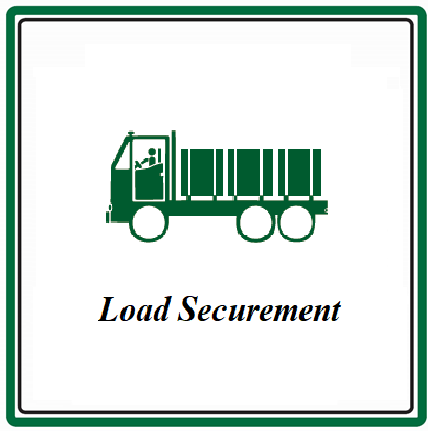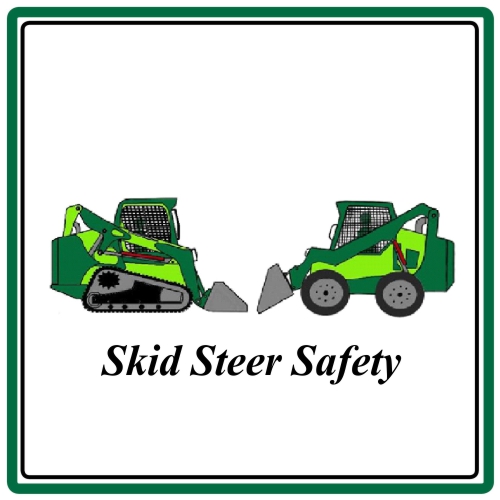-
Participants of this AWP Safety course learn the legislation, PPE, pre and post-trip inspections, preventative maintenance, driving risks, strategies and skills. After reviewing the importance of safety training, due diligence and legislation, participants are introduced to AWP, PPE, operating requirements and strategies. Physics of both Boom and Scissor lift equipment, driving hazards, safe operations and load securement are also explained. Practical student exercises include pre-trip inspection, unloading, practical driving, reversing and load securement. Course Requirement: Appropriate footwear, clothing and PPE are required. Download Outline
-
In the Boom Lift Safety course, students learn the legislation, PPE, pre and post-trip inspections, preventative maintenance, operating strategies and skills, driving, carrying personnel, boom lift physics, traction, vehicle limitations, load securement, loading and unloading procedures. Practical exercises include pre-trip inspection, practical driving and reversing, and load securement. Operational handling standards must be met to pass. Course Requirement: Appropriate footwear, clothing and PPE are required. Download Outline
-
The Excavator Operator Safety Program provides comprehensive in-class theory that covers all aspects of legislation, PPE, pre- and post-trip inspections, preventative maintenance, operator safety, manoeuvring equipment, and site controls. Practical exercises include pre-trip inspection, operator training on unloading & loading, lifting & lowering, reverse/back up to enter & exit areas, travel and tight radius turns. Operational handling standards must be met to pass. Course Requirement: Appropriate footwear, clothing and PPE are required. Download Outline
-
Participants of the driver fatigue course learn the impacts of fatigue on safety. They learn the nature of fatigue, the extent to which drivers are impacted and various strategies to mitigate fatigue. There is a review of legislation, due diligence, and relevant lifestyle choices. Participants complete a journey management plan and fatigue assessment form in the practical portion of the course. Download Outline
-
Students in the Forklift Class 7 program learn the legislation, PPE, pre and post-trip inspections, preventative maintenance and driving and carrying personnel. Telehandler forklift physics, traction, vehicle limitations, load securement, loading and unloading procedures are carefully reviewed to ensure competence. They are also expected to perform practical exercises that include pre-trip inspection, driving and reversing, and load securement. Course Requirement: Appropriate footwear, clothing and PPE are required. Download Outline
-
Participants of the combined Forklift Safety course learn the legislation, PPE, pre and post-trip inspections, preventative maintenance, driving risks, strategies and skills. After reviewing the importance of safety training, due diligence and legislation, participants are introduced to forklift physics for the classes of units, PPE, operating requirements and strategies, equipment, driving hazards, safe operations and load securement are also explained. Practical operation checks are required. Student exercises include pre-trip inspection, unloading, practical driving, reversing and load securement. Course Requirement: Appropriate footwear, clothing and PPE are required. Download Outline
-
In the Forklift Classes 1, 4, 5 program students learn the legislation, PPE, pre and post-trip inspections, preventative maintenance, driving, carrying personnel, forklift physics, traction, vehicle limitations, load securement, loading and unloading procedures. Student exercises include pre-trip inspection, practical driving and reversing, and load securement. Course Requirement: Appropriate footwear, clothing and PPE are required. Download Outline
-
Material details appropriate legislation provincial & federal, due diligence, adverse conditions, permits, enforcement, driver & carrier responsibilities, cargo securement requirements for different load types and weights. Course Requirement: Appropriate footwear, clothing and PPE is required. Download Outline
-
Participants of the Log Book course learn provincial & federal regulations, due diligence, driving hazards, adverse conditions and other safety considerations such as permits, enforcement, driver & carrier responsibilities. Participants complete practical exercises including a logbook exercise based on all-time cycles and a journey management safety plan. Download Outline
-
Participants of this combined course learn everything included in the Log Book, Load Securement & Fatigue Management classes. It covers appropriate provincial & federal legislation, due diligence, adverse conditions, permits and enforcement. Included is a review of driver & carrier responsibilities, cargo securement requirements, fatigue symptoms and risks. Each student will complete a load securement, logbook and fatigue management exercise. Download Outline
-
In the Scissor Lift Safety course, students learn the legislation, PPE, pre and post-trip inspections, preventative maintenance, operating strategies and skills, driving, carrying personnel, scissor lift physics, traction, vehicle limitations, load securement, loading and unloading procedures. Practical exercises include pre-trip inspection, practical driving and reversing, and load securement. Operational handling standards must be met to pass. Course Requirement: Appropriate footwear, clothing and PPE are required. Download Outline
-
Skid Steer (Loader) Safety Program is a comprehensive in-class theory session that cover all aspects of operator safety, manoeuvring equipment and site controls followed by practical operator training and testing. Course meets or exceeds all relevant Standards and applicable jurisdictional regulations. Course Requirement: Appropriate footwear, clothing and PPE is required. Download Outline








